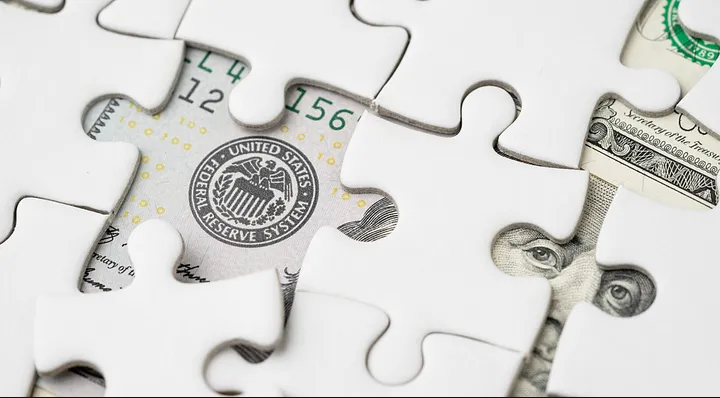The unfortunate state of monetary policy

“In early 2020, as the COVID pandemic engulfed the world, the Fed slashed interest rates to zero and started asset purchases on a massive scale, dwarfing all previous rounds of QE. Other central banks did the same, swallowing up so much of their own governments’ debt that they effectively monetised much of the exceptional fiscal expenditure of the pandemic years.”
Fifteen years ago, the collapse of Lehman Brothers rocked the world. As bank after bank collapsed, markets froze and money fled to the safety of US treasury bills and insured deposit accounts; central banks feared the advent of another Great Depression. They slashed interest rates to near-zero and deployed a range of unconventional instruments, collectively known as “quantitative easing” (QE).
Today, QE is no longer “unconventional”. It has become a normal part of the central bank’s toolkit. And people have become used to very low interest rates. Interest rates of 5% have been normal for much of economic history: but to today’s borrowers, they are high.
But very low interest rates and QE are nevertheless exceptional measures, and they are far from cost-free. The world is now discovering just how expensive they can be.
These measures were intended to be short-lived. The central bankers of 2008 believed they would quickly bring damaged economies back to their pre-crisis growth trend. Indeed, so convinced were those central bankers of the exceptional stimulatory power of QE, they were careful to limit its use to prevent runaway inflation.
Initially, their prediction seemed right. There was no Great Depression. There was a deep recession, but it was short-lived. By 2010, most major economies were recovering.
But then the recovery fizzled out. Rising oil prices raised inflation, and a sovereign debt crisis in Europe weighed on growth. Encouraged by supranational institutions such as the IMF, governments turned to fiscal austerity, frightening their populations into compliance by pointing at the terrible economic suffering of Greece. For much of the next decade, government debt and deficits dominated economic thinking — and, perhaps more importantly, newspaper headlines.
Throughout this time, central banks kept interest rates at exceptionally low levels. Some even experimented with negative interest rates. And QE came to resemble a tag race. As one central bank wound down its asset purchases, another ramped them up.
But the measures proved weak, and growth elusive. And once the oil price rises of the early 2010s had come to an end, inflation was nowhere to be seen. Western economies were stuck in a low-growth, low-inflation, low-interest-rates rut. Low interest rates and QE could prevent a Depression, but they couldn’t generate growth.
As the Eurozone crisis faded and commodity prices fell, growth returned to many Western economies. And in 2017, the new US President, Donald Trump, aggressively cut taxes to boost the US economy. The US economy roared.
Over the next two years, the Fed progressively raised interest rates and reduced the size of its balance sheet. But the fiscal boost proved short-lived, and by 2019 the economic strains were evident. The Fed paused interest rate rises early in 2019. And in September, it was forced back into “unconventional measures”, injecting large amounts of liquidity to prevent markets freezing. It didn’t call this QE, but many people thought it amounted to further monetary easing. And in the light of what happened next, it is hard to disagree.
In early 2020, as the COVID pandemic engulfed the world, the Fed slashed interest rates to zero and started asset purchases on a massive scale, dwarfing all previous rounds of QE. Other central banks did the same, swallowing up so much of their own governments’ debt that they effectively monetised much of the exceptional fiscal expenditure of the pandemic years.
The enormous quantities of money that governments threw into their economies during the pandemic kept people alive and businesses afloat. Central bank asset purchases prevented massive issuance of government debt from forcing up interest rates — but it also removed governments’ usual budget constraints. Governments threw caution to the wind, repeatedly dropping helicopter money to households and (through loans that eventually had to be forgiven) businesses, and paying exorbitant amounts to consultants and companies with little accountability. It is probably fair to say that government debt would not now be as high as it is had central banks not been doing copious QE. But the pandemic was an even bigger shock to the global economy than the failure of Lehman Brothers. It was surely better to overdo the financial support than risk a second Great Depression.
However, central banks themselves acted recklessly during this period, not because they were monetising deficits, but because they were trying to stimulate demand. Throwing money into an economy to stimulate demand when economic activity is being deliberately shut down for public health reasons is a recipe for inflation.
Like a giant tsunami, the pandemic left a trail of destruction in its wake. Fractured supply chains, disrupted logistics and staff shortages combined to generate cost-push inflation. And after Russia invaded Ukraine in February 2022, rapidly rising oil and food prices, and enormous packages of sanctions, added fuel to the inflationary flames. But underlying it all is the overhang of stimulus money distributed by governments and central banks.
Money-financed deficit spending always carries the potential to be inflationary. Whether it turns out to be in practice depends on the ability of the supply side to respond to the demand stimulus. During the pandemic itself, people had very little spending opportunity, so much of the money created was forcibly saved. But once people were able to spend again, demand quickly exceeded supply, and the supply side inevitably responded by raising prices.
It was not hard to foresee that there could be inflation when economic activity returned, and central banks really should have been prepared for it. But a decade of inflation being “the dog that didn’t bark” had convinced many people that QE cannot generate significant or lasting inflation. Central bankers who in 2009 had been terrified that even a small amount of QE could cause runaway inflation, by 2019 had come to believe that unlimited asset purchases carried little risk. But their belief grew during a time when governments desperate to reduce their debt and deficits were draining money from the economy as fast as central banks put it in. And Japan seemed immune to inflation however much money the government and central bank threw at it.
Thanks to Russia, we will never know much inflation pandemic-era disruptions would have caused, and how long it would have lasted. It would probably have been lower, but this might have made it more persistent: after all, if your forced savings are being eroded less rapidly, they will last for longer.
The most exorbitant monetary and fiscal stimulus in history has now given way to the fastest (though not yet the largest) monetary tightening in history. Interest rates are now back at pre- Lehman levels, and central banks are rapidly withdrawing the excess reserves created by QE. There’s even talk of returning to the pre-2009 monetary policy framework, in which the central bank uses reserve scarcity to control interest rates.
As the cost of government borrowing rises, the focus is once again turning to government debt and deficits. Austerity is on its way back, and this time central banks will not offset it. Combined monetary and fiscal tightness will mean recession in many countries, debt default in a few, and misery for millions.
Helicopter money and deficit financing are powerful tools. When used appropriately, they can pull economies out of recession and kickstart growth. But when they are misused, they can cause high and stubborn inflation. Like dangerous drugs, they need to be locked up in a cupboard and only used by highly trained professionals to treat specific conditions. The pandemic was such a condition, but those using the tools did not understand their effects and were careless with their deployment.
But although the misuse of these tools during the pandemic will mean pain for many people, this doesn’t mean the tools should be discarded. Rather, we should learn from this unfortunate experience, and teach future generations their proper use.




